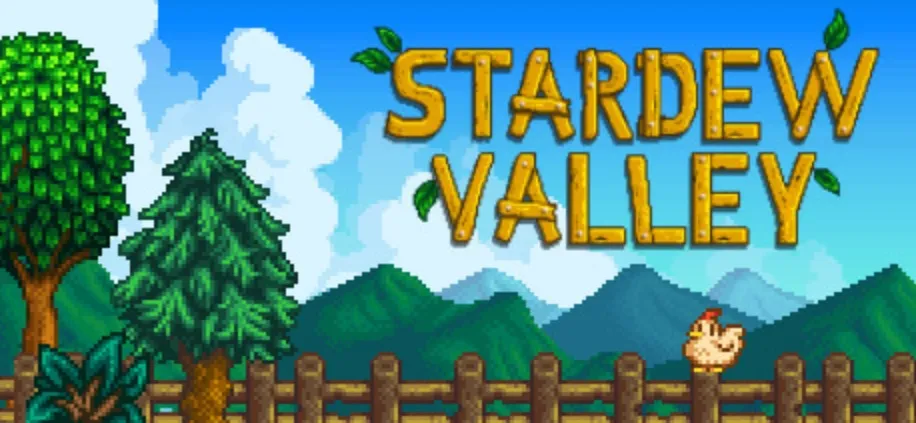From FarmVille to Rune Factory to Harvest Moon, the farming-simulation genre is one that many gamers have been familiar with at one time or another. But Stardew Valley manages to take this formula and run with it, making for one of the most charming and addicting gaming experiences I’ve had recently.

The game starts out with a brief bit of customization, including designing your character, naming your soon-to-be farm (I named mine Chocobo Farm), and choosing whether or not you are a cat or a dog person, among other things. Once this is done, a quick cut scene shows how your character, fed up with the mundane routine of working in a windowless office, decides to follow in their grandfather’s footsteps and move to Pelican Town to fix up the family farm.
Upon your arrival, you are welcomed by the mayor and brought to your farm, which has seen better days since your grandfather left it. The first few in-game days are spent getting acclimated to the various farm tools at your disposal, as well as the stamina meter and day/night progression. As much as you would like to hoe and ax and till to your heart’s content, your farm, much like Rome, won’t get built in a day.
The bulk of your time in Stardew Valley will be spent tending to your farm. From clearing debris like weeds and logs to planting crops and eventually caring for livestock, there are many things to do with a limited amount of energy and time each day to do them. All of these chores can feel overwhelming at first, as it does take a while to find a rhythm for how much you can get done each day. But as with any game, practice breeds results, and before long you have a routine that gives you enough time to water all your plants while still being able to explore Pelican Town and all its charm.
One of the best aspects of Pelican Town are the 20-plus other residents that inhabit it, each one with their own unique personality and schedule. Whether it’s Penny the schoolteacher, Clint the blacksmith, or Linus the vagrant, you can befriend, and in some cases marry, each resident—with unique interactions and special cut scenes depending on your level of friendship.
Naturally, the residents in Pelican Town aren’t the only thing to keep you busy. There is also a museum to fill with various artifacts and gemstones; a vast forest to explore and utilize for precious resources; a dangerous, procedurally generated mine filled with monsters guarding valuable treasure; lakes and oceans to fish and forage; as well as some hidden surprises that ensure you will still be discovering new things well into your 80th hour of playtime.
As much as there is to discover and explore in Stardew Valley, the one thing that kept me coming back was simply the sheer excitement and curiosity of what the next day would bring. Would my pumpkins finally be ready for harvest? When I give Abigail another gift, will she finally be ready to go out with me? Will I be better prepared to make it down to the next level in the mines? All of these things can easily turn what was supposed to be a quick gameplay session into one that lasts into the wee hours of the morning.
End game is an area where Stardew Valley starts to show some fatigue. As much as I enjoyed the mundane tedium of watering my parsnips and chopping down trees, I do see how these activities can lack longevity—especially when you start getting into your third and fourth year on the calendar. Monthly events don’t refresh every year, either, so expect the same social obligation to attend the Dance of the Moonlight Jellies every summer. Once you start to fill up the museum and achieve a high social rank with everyone in town, exploration and socializing fall by the wayside and you are left with only your farm and a few odds and ends to fill your days.
Even with these late-game shortcomings, expanding your farm and making as much money as possible still maintain their appeal even after you have explored every corner of Pelican Town, especially when you unlock special rewards like a greenhouse and fast travel mine carts.
All in all, Stardew Valley is a very approachable game that can be enjoyed by gamers of every age and skill level. Everything about it is memorable and addicting, right down to the soundtrack that I found myself humming well after the game was turned off. To top it all off, it is currently available on just about every gaming platform, and with more content—including multiplayer—on the way, there is practically no reason not to try it for yourself.
Stardew Valley is currently available for Windows, OSX, Linux, Playstation 4, Xbox One, Playstation Vita, and Nintendo Switch.
*Originally posted on Twin Cities Geek on May 2nd 2018*
